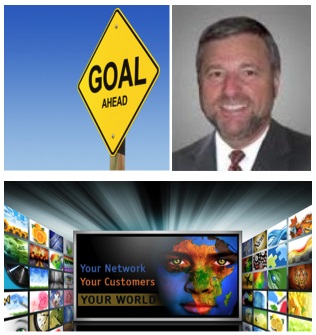It’s an exciting time for the digital signage industry. The last couple of years have demonstrated fast-paced growth with its diverse venues, technological advances, and wide array of media platforms. Retail outlets, airports, gas stations, medical offices, restaurants, stadiums, casinos, banks, school campuses, movie theaters, and others have discovered one of the most efficient methods of communicating with consumers.
Digital signage presents an opportunity to deliver dynamic messaging that is relevant and resonates with target audiences. It is defined by the content displayed on the screen. Content that can be designed to inform, educate, entertain with engaging and relevant messaging and, ultimately, influence decision-making and purchase.
However, despite the advancements and continued growth of deployments, many digital signage networks fail to meet their objectives. The road to success can be complex and challenging. It’s critical to invest time in planning. From content strategy and management, hardware and installation, the decisions that are made at the onset will impact the long-term investment. Making changes once deployed can often be prohibitively costly.
Digital signage provides a powerful and flexible platform in which to accomplish business goals with precise targeting. Successful digital signage deployments are the direct result of focused planning initially and continued attention and optimization of content and operations.
Here are the key elements that are critical for a successful Digital Signage Network:
1) What’s the mission, the goal, the objective? The first step is to develop a clear set of business goals and expected outcomes. Defining the objective of the digital signage deployment is critical to optimizing the ROI and other success qualifiers.
2) What’s the message? How do I convey the message to the viewer that will best accomplish my mission? What is displayed on the screens can single-handedly make or break the success of the entire digital signage investment. A content strategy must be developed to satisfy the messaging objective. It must also be relevant and resonate with target viewers.
3) How is the content creation best designed and produced to deliver that message? Content is best designed around the audience, those who can achieve the best impact from the message. From that, the type of screen is taken into account to ensure the message is best suited for that audience. Regardless of screen size and type, understanding the combination of the viewer and the delivery mechanism (the screen) is critical in delivering impact.
4) What software do I need? Which and how will different delivery vehicles best deliver that content? What reports do I need and how does the software get that data back to me? The network must be designed and architected to maximize engagement of the audience. Proper planning must include structural considerations as well as internet connectivity amongst other variables. How the content delivery is managed across multiple screens and locations can be overwhelming, especially where there is localized messaging and scheduling needs. The content management system is a critical element for establishing reliable and efficient content management. Understanding and selecting the system/partner that fits the unique needs of the network is a critical factor to both immediate and long term budget planning.
5) What hardware will best display the particular type of content I am producing and will work well with the software I am going to use? It used to be that hardware was a screen display, mount, media player, cables, and connectors, but today it has expanded to include so much more. Screens are now being incorporated into kiosks, custom designed “furniture,” and display architecture to create a dynamic impression within a given environment. One thing that is important to understand is that commercial screens for digital signage are not the same as consumer screens; and trying to cut cost corners by buying up consumer screens will result in complications during deployment.
6) How do I deploy all of this? There are many exciting technologies that provide dynamic integration with digital signage. Branded content, special offers, social sharing, and real time connectivity can all enhance the engagement experience as well as help develop a long term connected relationship with the audience.
7) What does my ongoing management look like? Once it is deployed, digital signage is a long term commitment. Because of the nature of the network that is constantly in flux, it takes a solid team of experts to keep abreast of the efficacy and efficiency of the network. Content, hardware, and software must not only be updated and replaced, but also optimized. That includes testing of the content, repair of hardware and software, and refreshing content in order to stay relevant.
Philip M. Cohen is the President/CEO of Care Media Holdings Corp. and its brands PetCARE TV, Women's HealthCARE TV and KidCARE TV. With a national footprint of more than 6000 place-based screens, CARE Media is the largest distributor of broadband delivered patient education programming to medical specialty practices in the US. CARE Media was recently awarded Best Healthcare Deployment in Digital Signage at the 2011 Digital Screenmedia Association's Industry Excellence Awards where Mr. Cohen also received Network Operator of the Year. Mr. Cohen sits on the Advisory Board of the Digital Signage Expo, is a board member of the Digital Signage Federation and a member of the Digital Signage Association. He also shares his rants and industry guest interviews on digital signage success at his blog, cohenoncontent.com










